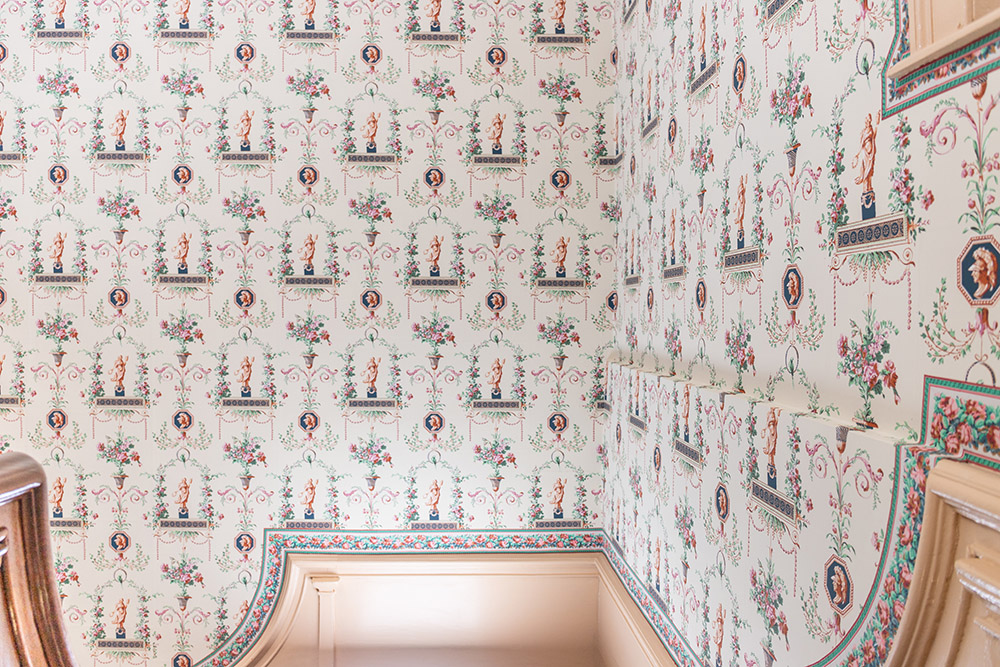
Central Passage
The autumn of 2020 saw Mount Vernon’s Central Passage dramatically transformed by an elegant neoclassical wallpaper, with medallion portraits, graceful female statuettes, and flower-filled vases.
Several clues led to this striking addition. We know from George Washington’s records that he hung wallpaper in most rooms of the Mansion that had unpaneled, plaster walls. A small fragment of wallpaper found in this room in the 1890s displayed a curving tendril—a distinctive feature of neoclassical arabesque patterns popular in the late 18th century, inspired by the decoration of ancient Roman wall murals, and popular for hallways in the 1790s. This particular pattern reproduces a documented paper purchased in 1794 from the same Philadelphia supplier that Washington patronized three years later.
The original paper, from the John Imlay house in Allentown, New Jersey, is now at the Metropolitan Museum of Art. The reproduction pattern was created by Adelphi Paper Hangings, and Connoisseur Society member and decorative arts scholar Pauline Metcalf assisted with research. Funding was generously provided by The Felicia Fund.
The wallpaper installation continues a multiyear room restoration that began with structural reinforcement of the staircase in 2015. In 2018, the architecture team returned the painted woodwork to its original 1799 stone color, based on updated paint analysis, and the curatorial team oversaw restoration of the original gilded vitrine containing the key to the Bastille. The project will culminate in 2021 with period chairs, small figures, and gilt-framed pictures replicating the prints listed in Washington’s inventory.
The Central Passage was an important space for the Washington family, used not only to greet guests, but also for entertaining and dancing. The room is bookended by two doors opening to the west and east fronts of the Mansion, providing a cool breeze off the Potomac River in summer. Guests would have been greeted by Frank Lee, the enslaved butler and brother to William Lee, George Washington’s enslaved valet who was by his side throughout the Revolutionary War.
Originally, the room would have been lined with 14 mahogany side chairs, where visitors awaiting an audience with George Washington might have been seated. These are not present in the space now due to constraints with interpretation. Today, visitors to the space can imagine the guests who sat in this very room and the conversations they had through the interpretation of the space.
Learn more about the central passage.
LEARN MORE